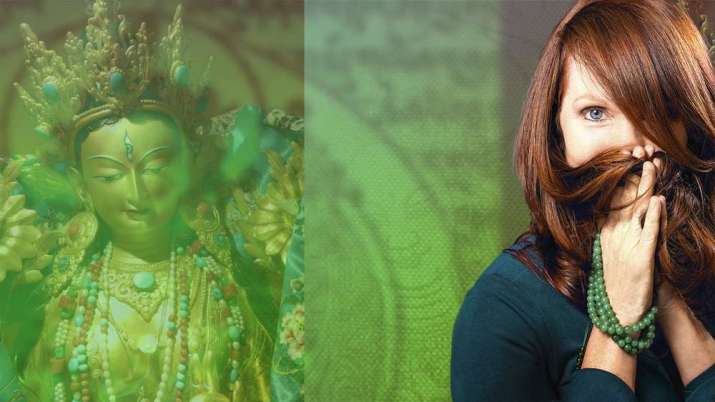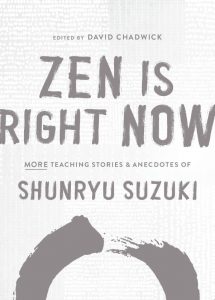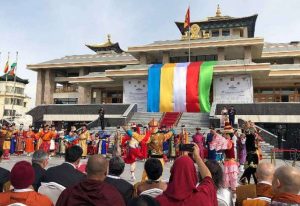
Mantra Musician Lee Mirabai Harrington is trained in classical Indian vocals as well as rock and gospel music. Nevertheless, she most cherishes communal singing and offers a unique form of Buddhist mantra kirtan.
Harrington also studies Tibetan medical mantra under the guidance of Dr. Nida Chenagtsang. Having been diagnosed with an incurable condition, she has personally experienced the healing power of medical mantras and the Medicine Buddha sadhana. In the second part of this two-part interview,* the musician shares her insights with Buddhistdoor Global.
Buddhistdoor Global: What is your process when coming up with new melodies for ancient mantras?
Lee Mirabai Harrington: My process is to let it happen. The melodies always come to me when they themselves are ready to be revealed; I don’t force these things. I simply do my practices and try to merge to the best of my abilities with the qualities of these divine beings and then—when the time is right, according to the yidams—I will start to hear music in my head. It starts with very simple melodies, which come to me in dreams, or during meditations, or on long walks with my dog, and I will sing these melodies into a voice memo app. Then, over the subsequent days, eventually entire song arrangements will arrive in my mind. I hear the instruments and everything. This “delivery” process usually takes 3–7 days, depending on how receptive I am and how effectively I can get out of my own way.

The melody for my track “Om Tare Tuttare Ture Soha” came to me toward the end of a week-long Green Tara retreat at Karma Triyana Dharmachakra monastery. I had been doing many long sessions of Green Tara sadhana and reciting a lot of praises (Praises to the 21 Taras), and during one of the dissolution periods this melody flowed into my mind. At the time it felt like a gift from Tara herself. This may be an egotistical thing to think, but I still believe that. My sense is/was that Tara felt it was time for that particular melody to be in this world. People tell me they feel very healed by this melody—that they feel a Tara transmission coming through. I am grateful for that.
When I was studying classical Indian vocals in India, we spoke a lot about the gandharvas, which are heavenly beings with, well, heavenly musical abilities. The gandharvas are like angels: they act as messengers between gods and humans. So really, my musical process is to bring my mind and my consciousness into the purest possible state—a holy state, if you will—and allow the gandharvas to deliver my music. Most of the Indian musicians I know—and all the true artists I know—have experienced something similar. That’s why I believe that to make art is to touch divinity and bring it back to earth.

Anyway, before I recorded any of the Buddhist melodies on my last album, Beyond the Beyond: A Mantra Music Experience, I played some scratch recordings for my Rinpoche (or rather, for his young nephew, who listened on Rinpoche’s behalf). I wanted to make sure the melodies were appropriate and proper—that they were worthy of the mantras, in other words. I remember Lama Karma listening and smiling and tapping his foot along to the music and finally he said, simply: “It’s very good. This will benefit many beings.”
BDG: Can you talk a bit about Tibetan medical mantras?
LMH: Everything in this universe is made of vibration, and medical mantras are used to create subtle shifts in vibration to reharmonize or rebalance a body or mind that is in a state of imbalance. There are mantras to ease arthritis, toothache . . . the list goes on. Again, we’re using sound to heal—liberation through sound, through vibration. I’m still a student, but I have received transmissions for a number of healing mantras, some of which I offer at kirtans and workshops. They are very precious. I sing a lot of mantras to anxious and sick dogs at the animal shelter where I volunteer.
BDG: I understand you are treating an “incurable” medical condition with Tibetan medicine and Medicine Buddha sadhana. Can you tell us about this?
LMH: I really believe in these mantras. I have full confidence in their ability to transform, to heal. I have a combination of incurable” and “untreatable” medical conditions (incurable according to Western medicine) and I was told two years ago that I would lose the ability to walk within a certain number of months. Instead of taking on that dire pronouncement as an absolute truth, I started practicing the Medicine Buddha sadhana, along with some specific medical mantras, and I am still walking.
In gratitude, I started recording a new Medicine Buddha melody as well as several additional songs for my next album, tentatively titled A Secret Sky. This album will be all Buddhist mantras—using some traditional melodies and some of my own melodies—and I will be working with the great producer Ben Leinbach out in California. Once I have enough funding—I spent almost all of my savings on medical expenses in the past few years—I plan to fly out to California to finish the recordings.
BDG: What future projects do you have lined up?
LMH: I love leading kirtans and workshops at yoga festivals—especially festivals that feature spiritual music from multiple traditions. I’ve got a few retreats lined up. I also hope to do a European tour in 2020 or 2021. Mostly I am going to focus on my own practice and study—whatever my teachers and guru want me to do, I’ll do.
BDG: Any last words for our readers?
LMH: The path of mantrayana is a quick way to access the authentic self, one’s buddha-nature—what Chogyam Trungpa Rinpoche would call one’s “Basic Human Goodness.” As a singer, I am grateful that I can use my voice as an instrument to help heal others and perhaps even to help liberate them.
May all beings benefit!
* Buddhist Kirtan: Interview with American Mantra Musician Lee Mirabai Harrington, Part One (Buddhistdoor Global)
See more











